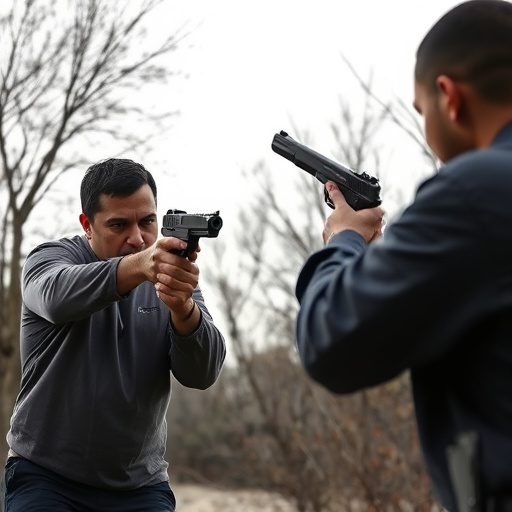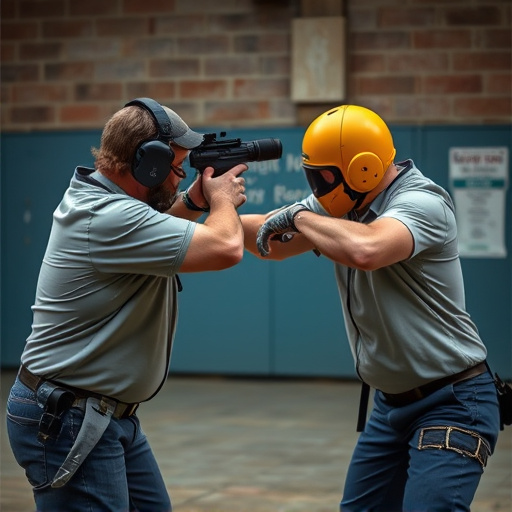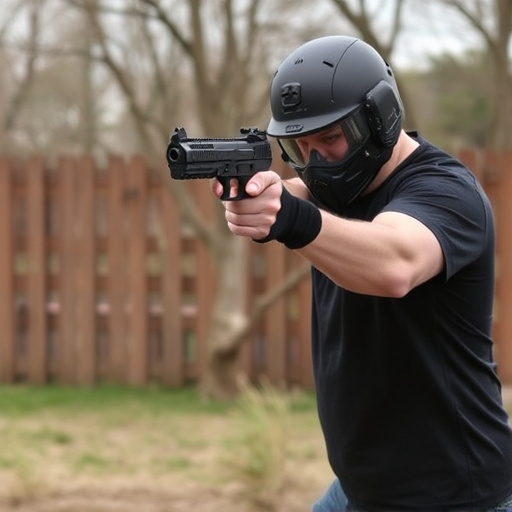Stun gun manufacturers have developed the "most concealable stun gun design" that mimics everyday objects like flashlights or personal care products. This innovative approach features non-reflective finishes and ergonomic shapes for discreet carrying, without compromising performance. Optimal electrode placement ensures powerful current delivery while maintaining secrecy. Testing involves rigorous simulations to validate effectiveness under diverse conditions, ensuring safe and efficient self-defense.
Discover the secrets behind the most effective stun guns, focusing on electrode spacing as a critical factor in their power and safety. This article delves into the latest design innovations that make stun guns more discreet while enhancing their performance. Learn how electrode placement optimizes shock delivery, ensuring effectiveness without compromising user safety. Explore practical concealment strategies for those seeking the ultimate self-defense tool—the most concealable stun gun design for everyday carry.
- Stun Gun Design Innovations for Discretion
- Electrode Spacing: Key to Effectiveness
- Concealment Strategies for Optimal Safety
- Testing and Validation of Stun Gun Performance
Stun Gun Design Innovations for Discretion

In recent years, stun gun manufacturers have made significant strides in design innovations, with a particular focus on enhancing discretion. One of the most notable advancements is the development of what is often referred to as the “most concealable stun gun design.” These innovative devices are meticulously engineered to mimic everyday objects, making them virtually indistinguishable from items like flashlights or personal care products. This stealthy approach ensures users can carry their self-defense tool without drawing unnecessary attention.
The key to these designs lies in their compact size and clever use of materials. Skilled artisans employ advanced manufacturing techniques to create stun guns that are not only small enough to fit comfortably in a pocket or purse but also feature non-reflective finishes and ergonomic shapes, further enhancing their concealability. As a result, individuals seeking effective personal safety without sacrificing discretion now have access to cutting-edge options that seamlessly integrate into their daily lives.
Electrode Spacing: Key to Effectiveness

Electrode spacing plays a crucial role in the effectiveness of a stun gun, especially in designing the most concealable models. The proximity of electrodes ensures direct and powerful electrical current delivery to the target, making the stun more efficient. In the context of concealment, a stun gun with optimal electrode placement can offer users a discreet self-defense option without sacrificing performance.
This design aspect is particularly important for individuals seeking a reliable personal safety device that they can easily carry and discretely deploy. By optimizing electrode spacing, stun gun manufacturers aim to enhance the device’s impact while maintaining a low profile, ensuring that it remains out of sight but readily available in case of an emergency.
Concealment Strategies for Optimal Safety

When considering the safety and effectiveness of a stun gun, one often overlooked aspect is its design in relation to concealment. The optimal stun device should balance power with discretion, allowing users to defend themselves in unexpected situations while maintaining a low profile. This is particularly important for individuals who need to keep their self-defense tools hidden for personal safety or professional reasons.
The most concealable stun gun designs often incorporate compact size, ergonomic grip, and innovative materials. Slimmer devices that fit comfortably in pockets or purses are ideal for discreet carry. Additionally, some models feature textured or rubberized coatings that prevent slipping and provide a more natural feel during use, enhancing user control and reducing the risk of accidental discharge. These features contribute to a stun gun’s overall effectiveness while ensuring it remains hidden from prying eyes.
Testing and Validation of Stun Gun Performance

Testing and validating a stun gun’s performance is an intricate process, especially when examining electrode spacing in the context of the most concealable stun gun design. The effectiveness of a stun device relies on precise current delivery to neutralize an assailant quickly and safely. Manufacturers often conduct rigorous tests using various methods to ensure optimal performance under different scenarios.
These tests involve simulating real-world situations, such as evaluating electrode spacing during impact against varying surface types and angles. Researchers might employ advanced simulations and computer models to predict current flow and intensity, ensuring the stun gun delivers a powerful yet controlled shock. The goal is to achieve maximum effectiveness while maintaining user safety and minimizing unintended injuries.
The optimal balance between stun gun effectiveness and concealability lies in electrode spacing and innovative design choices. As discussed, a well-designed stun device with strategically placed electrodes offers superior performance while maintaining discretion. By adopting advanced design innovations and considering various concealment strategies, users can access the most effective self-defense tool for personal safety without sacrificing anonymity. When combined with thorough testing and validation, these factors ensure individuals can protect themselves in diverse scenarios, choosing the perfect stun gun that fits their needs.
